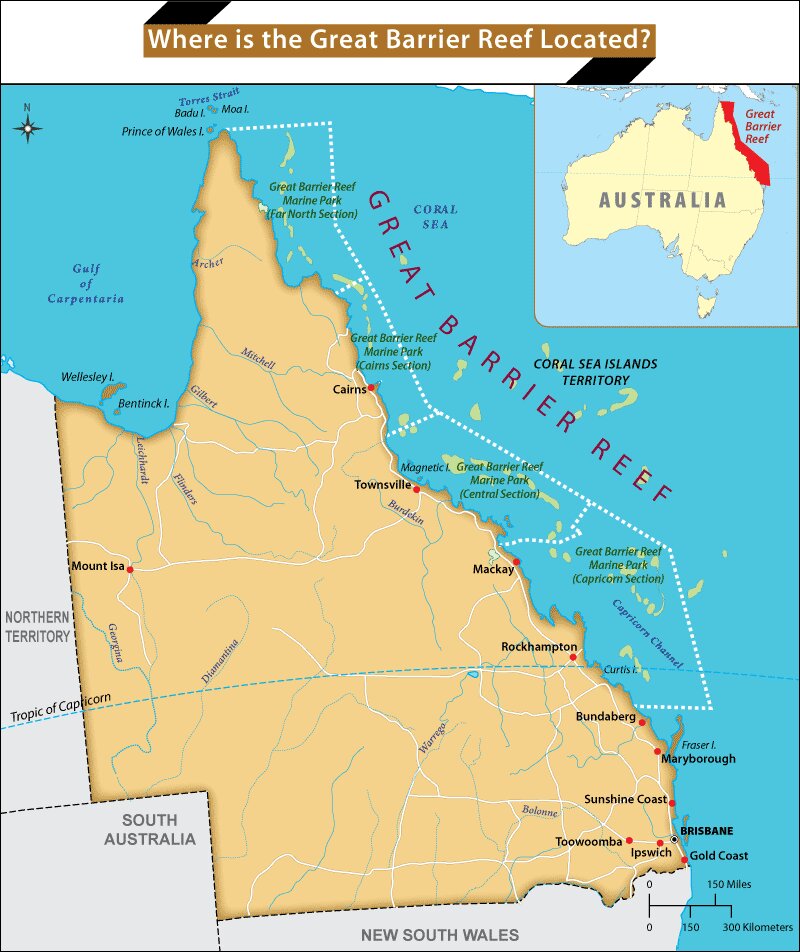Biodiversity & Environment
Deteriorating Great Barrier Reef
- 05 Dec 2020
- 3 min read
Why in News
Recently, the International Union for Conservation of Nature (IUCN) has highlighted that Australia’s Great Barrier Reef is in a critical state and deteriorating as climate change warms up the waters in which it lies.
Key Points
- Great Barrier Reef:
- It is the world’s most extensive and spectacular coral reef ecosystem composed of over 2,900 individual reefs and 900 islands.
- The reef is located in the Coral Sea (North-East Coast), off the coast of Queensland, Australia.
- It can be seen from outer space and is the world’s biggest single structure made by living organisms.
- This reef structure is composed of and built by billions of tiny organisms, known as coral polyps.
- They are made up of genetically identical organisms called polyps, which are tiny, soft-bodied organisms. At their base is a hard, protective limestone skeleton called a calicle, which forms the structure of coral reefs.
- These polyps have microscopic algae called zooxanthellae living within their tissues. The corals and algae have a mutualistic (symbiotic) relationship.
- It was selected as a World Heritage Site in 1981.
- Concern:
- Coral along large swathes of the 2,300-kilometre reef have been killed by rising sea temperatures linked to climate change, leaving behind skeletal remains in a process known as coral bleaching.
- When corals face stress by changes in conditions such as temperature, light, or nutrients, they expel the symbiotic algae zooxanthellae living in their tissues, causing them to turn completely white. This phenomenon is called coral bleaching.
- Corals can recover if the stress-caused bleaching is not severe.
- Coral bleaching has occurred in the Caribbean, Indian, and Pacific oceans on a regular basis.
- Coral along large swathes of the 2,300-kilometre reef have been killed by rising sea temperatures linked to climate change, leaving behind skeletal remains in a process known as coral bleaching.
- In August 2019, Australia downgraded its long-term outlook to "Very Poor" for the first time and there are high chances that it will be considered for the List of World Heritage in Danger.
- The List is designed to inform the international community of conditions which threaten the very characteristics for which a property was inscribed on the World Heritage List.
- It also encourages corrective action.
International Union for Conservation of Nature
- It is a membership union uniquely composed of both government and civil society organisations.
- Created in 1948, it is the global authority on the status of the natural world and the measures needed to safeguard it.
- It is headquartered in Switzerland.
- The IUCN Red List of Threatened Species, is the world's most comprehensive inventory of the global conservation status of plant and animal species.







